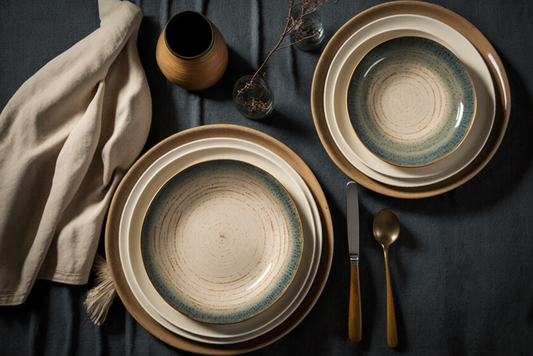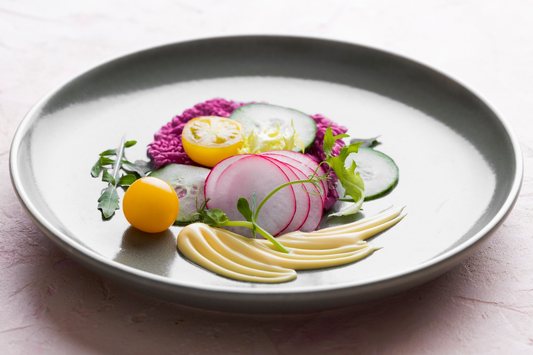
Champagne is a luxurious drink that is often associated with celebrations and special occasions. Whether you're hosting a party or simply enjoying a glass of bubbly, it's important to know how to choose the right champagne glass, how to hold it correctly and how to serve it properly. In this article, we'll explore the different types of champagne glasses available, including their unique features and uses. We'll also provide tips on how to hold a champagne glass as well as the proper way to open and serve champagne. So, whether you're a champagne connoisseur or a newcomer to the world of bubbly, read on to discover everything you need to know about champagne glasses, etiquette, and service.
What are the different types of Champagne glasses?
Flute Glasses
Flute glasses are the most popular type of champagne glasses. They have a long stem and a small bowl and are tall and narrow. The narrow shape of the bowl helps to preserve the carbonation and aroma of the champagne, while the long stem prevents the heat from the hand from warming up the drink. Flutes are ideal for toasting and enjoying champagne. The Dartington crystal glasses are perfect for entertaining or a great gift for friends.

Coupe Glasses
Coupe glasses, also known as saucer glasses, is the oldest type of champagne glass, they are wide and shallow with a short stem. They were popular in the early 20th century and are often associated with the Great Gatsby era. Coupe glasses were designed to showcase the bubbles and the colour of the champagne, but their wide opening makes it difficult to preserve the aroma. The shallow bowl of the coupe has a large surface area, which means the bubbles are exposed to air and evaporate rapidly, so you'll have to drink quickly if you prefer your Champagnes fizzy. Despite this, they are still popular for pouring champagne cocktails, and they can also be used as a serving dish for desserts. We recommend serving Champagne in a flute or tulip glass and drinking Prosecco or a fruity sparkling wine in a vintage coupe.
Tulip Glasses
Tulip glasses are similar to flute glasses, but with a wider curvier bowl that tapers in at the top. The shape of the bowl helps to concentrate the aroma of the champagne while the narrow opening helps to preserve the carbonation.Tulip glasses are a popular choice for serving vintage champagne, because it allows the flavours to develop more than the typical flute.

Trumpet Glasses
Trumpet glasses are a more modern take on the traditional flute glass. They have a wider bowl that flares out at the top, resembling the shape of a trumpet. The wider opening allows the champagne to breathe and the aroma to develop, while the narrow stem prevents the drink from warming up. Trumpet glasses are often used for serving sparkling wines other than champagne.
What’s the proper way to serve Champagne?
Champagne is a luxurious drink that requires special attention when it comes to opening and serving.
Chill the champagne: Champagne should be served cold, between 45-50°F (7-10°C). To keep your bottle chilled after it’s been removed from the fridge, consider placing the bottle in an ice bucket filled with ice and water for at least 30 minutes before serving.
Prepare the bottle: Before opening the bottle, remove the foil and loosen the wire cage that secures the cork. Make sure to always keep your thumb over the cork to prevent it from popping out accidentally.
Open the bottle: Grasp the bottle with one hand and twist the wire cage counter clockwise with the other hand. Once the wire cage is loosened, hold the cork, and twist the bottle slowly until the cork pops out with a soft "whoosh" sound. Never point the bottle towards people or fragile objects when opening.
Pour the champagne: When pouring champagne, hold the bottle at a 45-degree angle and gently pour a small amount into each glass. Avoid pouring too much at once, as this can cause the champagne to foam up and spill over the glass. Allow the foam to settle before filling the glass to its full capacity.
Serve the champagne: Hold the stem of the champagne glass and serve it to your guests. Champagne is often served as an aperitif, to toast to a special occasion or to accompany a meal.
How to hold a champagne glass?
Holding a champagne glass might seem like a simple task, but there are certain etiquette rules and techniques to follow and ensure that you do it correctly. Here are some tips on how to hold a champagne glass:
Hold the glass by the stem, the stem of the glass is designed to be held, not the bowl. Holding the bowl of the glass can transfer heat from your hand to the champagne, which can affect its temperature and flavour. Therefore, always hold the glass by its stem.
Pinch the stem between your thumb and forefinger, rather than your whole hand. This will make it easier to swirl the drink around the glass.
By following these simple tips, you can enjoy your champagne in the perfect way and impress your guests with your champagne etiquette.




